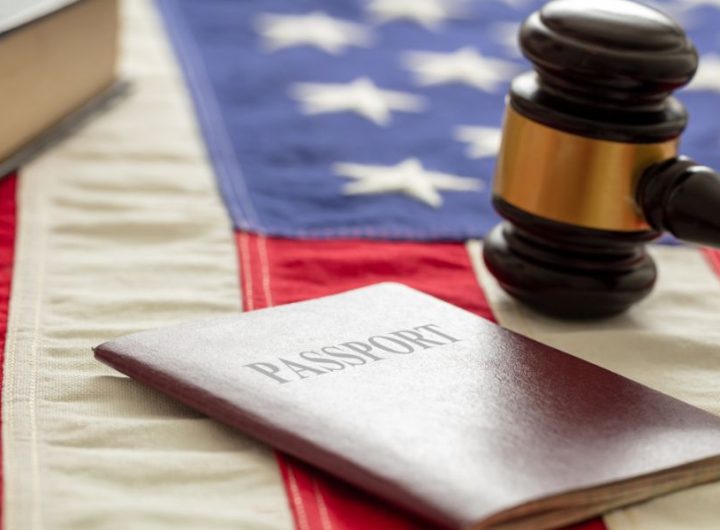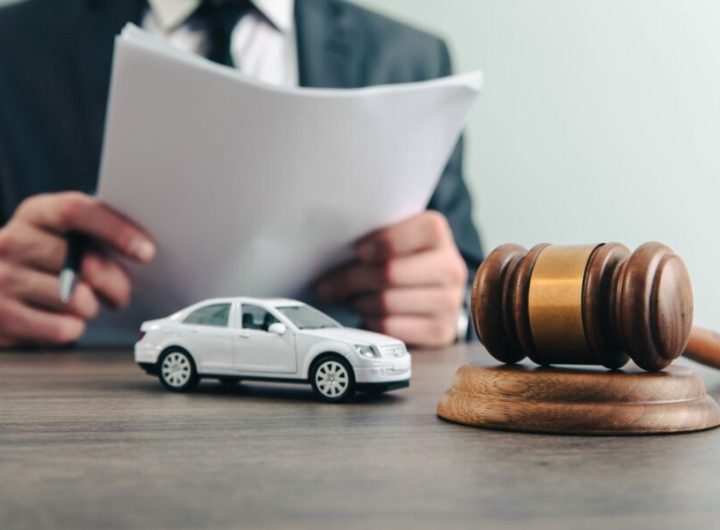
Car accidents remain a leading source of personal injury cases in New City, disrupting work, family routines, and finances in an instant. Understanding what causes these crashes, how liability is pinned down, and what compensation may be available helps victims and families make clear-headed decisions. In New City and greater Rockland County, many turn to an experienced New City Car Accident Lawyer, such as the team at Fellows Hymowitz Rice, for guidance through insurance, medical bills, and the legal process. Here’s a practical overview of how claims come together and what shapes outcomes locally.
Common causes of car accidents in New City neighborhoods
Local crash patterns in New City mirror statewide trends, but certain neighborhood and roadway features add their own flavor. The Route 304 corridor funnels high volumes of commuter traffic, while smaller residential streets around Little Tor Road and New Hempstead Road see frequent left-turn and backing collisions.
Frequent factors seen in police reports
- Distracted driving: Glances at a phone or GPS are enough to miss a slowing vehicle ahead. Even a two-second lapse at 35 mph covers the length of half a basketball court.
- Speed and following too closely: Rear-end impacts remain common near lights and plaza entrances where traffic compresses quickly.
- Left turns at busy intersections: Drivers misjudge oncoming speed when turning left from side streets onto arterials.
- Weather and visibility: Rain-slicked pavement, early nightfall in winter, and sun glare during rush hour increase stopping distances and reduce reaction time.
- Failure to yield to pedestrians and cyclists: Downtown areas and school zones add foot traffic: crosswalk violations often surface in witness statements.
Local nuances
- Mixed-use driveways: Shopping centers along major roads generate frequent turning traffic. Side-impact collisions happen when drivers edge out for a better view.
- Weekend traffic swings: Errands and youth sports can mean bursts of congestion around parks and fields, increasing fender-benders and parking-lot taps that sometimes mask underlying injury.
Understanding how and where crashes happen helps frame liability theories early and guides evidence gathering, especially when insurers later question fault.
Determining liability through police reports and witness accounts
Pinpointing legal responsibility relies on a careful reading of the record, not just assumptions from the crash scene. In New City, the Clarkstown Police Department typically prepares the official report (often referenced as the MV-104A), which becomes a launching point for claims.
What the police report contributes
- Narrative and diagram: The officer’s diagram, lane markings, and point-of-impact notes help reconstruct angles and speed changes.
- Contributing factors: Codes for distraction, following too closely, unsafe speed, or failure to yield offer a concise snapshot of suspected violations.
- Citations and statements: Traffic tickets can support negligence allegations, though they aren’t dispositive in civil court.
Police reports are influential but not the final word. Liability is eventually a civil finding, and New York’s pure comparative negligence rules allow fault to be divided among drivers based on evidence.
Why witness accounts matter
- Independent perspective: Neutral eyewitnesses often clarify who had the right of way or the color of a traffic light at impact.
- Consistency and detail: Early statements carry weight, especially if they mention distances, lane positions, or timing (“two seconds after the light changed”).
- Technology helps: Doorbell footage, commercial security video, and dashcams near New City’s busier intersections can corroborate or contradict the drivers’ versions.
A seasoned New City Car Accident Lawyer will also review vehicle damage patterns, airbag module data, and phone records where appropriate, building a fact pattern that stands up in negotiations, or in court if needed.
Insurance company roles in handling local accident claims
New York follows a no-fault system for basic medical and wage benefits, but fault still matters for broader compensation. Understanding how insurers interact under both no-fault (first-party) and liability (third-party) frameworks is essential.
No-fault/PIP benefits
- Basic coverage: Personal Injury Protection (PIP) typically pays medical expenses and a portion of lost wages up to statutory limits, regardless of who caused the crash.
- Quick deadlines: PIP applications often must be filed within 30 days of the accident. Missing this window can jeopardize benefits.
- Medical control: Insurers may schedule independent medical exams (IMEs) and challenge treatment as not “medically necessary,” which can interrupt care authorizations.
Third-party liability claims
- Serious injury threshold: To recover pain and suffering in New York, a claimant generally must meet the statutory “serious injury” threshold (for example, significant limitation of a body function or a fracture).
- Insurer strategies: Liability carriers may downplay property damage to argue low-impact forces, push recorded statements, or assign comparative negligence to reduce payouts.
- Settlement dynamics: Adjusters weigh police narratives, photos, treatment consistency, and any preexisting conditions before offering a settlement.
UM/SUM safety nets
If the at-fault driver is uninsured or underinsured, Uninsured Motorist (UM) or Supplementary Underinsured Motorist (SUM) coverage on the victim’s own policy may step in. Prompt notice to the carrier is key, and contract terms can be technical. Local counsel familiar with policy language helps prevent avoidable denials.
Firms like Fellows Hymowitz Rice routinely coordinate PIP, liability, and UM/SUM in tandem, so benefits flow on time and rights to broader compensation are preserved.
Compensation categories for victims of auto collisions
The shape of compensation depends on injuries, work impact, and long-term prognosis. Some recover quickly with conservative care: others face surgeries, months of therapy, or permanent limitations. Claims account for both immediate losses and future needs.
Economic damages
- Medical expenses: ER visits, imaging, surgery, prescriptions, physical therapy, and durable medical equipment, plus anticipated future care for ongoing pain or impairment.
- Lost wages and earning capacity: Time off for recovery, reduced hours, or career changes due to physical restrictions can be compensable.
- Household and transportation costs: Childcare during appointments, mileage to providers, home modifications, or paid help with tasks an injury now prevents.
- Property damage: Vehicle repair or total loss value, diminished value where applicable, and personal items damaged in the crash.
Non-economic damages
- Pain and suffering: Physical pain, limitations in daily activities, and the ripple effects of chronic symptoms.
- Emotional distress and loss of enjoyment: Anxiety behind the wheel, sleep disruption, missed hobbies, or lost milestones.
- Loss of consortium: In severe cases, impact on spousal relationships can be recognized.
Special circumstances
- Wrongful death claims: Families may pursue damages permitted by New York law, including economic losses and funeral expenses.
- Punitive damages: Rare and reserved for egregious misconduct, such as intoxicated driving with extreme recklessness.
Insurers scrutinize the link between treatment records and claimed losses. Detailed documentation, diagnoses tied to crash mechanics, consistent therapy notes, and clear work restrictions, gives adjusters fewer reasons to discount a claim. Experienced counsel in New City, including Fellows Hymowitz Rice, often partners with treating physicians and, when needed, independent experts to quantify both present and future damages.
Timelines shaping the success of car accident lawsuits
Timing can quietly make or break a claim. Several deadlines run in parallel, and missing one can limit or eliminate recovery.
Critical time bars and notices
- PIP application: Typically due within 30 days of the crash to preserve no-fault benefits.
- Statute of limitations: In many New York motor vehicle injury cases, the general deadline to file a lawsuit is three years from the accident date. Wrongful death claims often have a shorter window.
- Claims against public entities: Suits involving municipalities may require a Notice of Claim in as little as 90 days, with shorter overall filing periods.
Practical pacing of a strong claim
- Medical stabilization first: Settling too soon can understate future care needs. A short waiting period can clarify diagnosis, prognosis, and permanent impairment, if any.
- Evidence while it’s fresh: Securing surveillance footage before it’s overwritten, taking scene photos, and preserving vehicle data are early priorities.
- Negotiation windows: Liability carriers usually evaluate claims after treatment milestones or upon receiving a comprehensive demand package with medical records, bills, wage documentation, and a liability analysis.
Expect insurer checkpoints
Recorded statements, IMEs, and requests for prior records often arrive quickly. Organized responses maintain momentum and protect credibility. Counsel familiar with Rockland County practice keeps these moving without sacrificing leverage.


 Uncovering the Realms of Property Division During a Divorce Case
Uncovering the Realms of Property Division During a Divorce Case  Estate Planning After Divorce: Protecting Your Financial Future in Boston
Estate Planning After Divorce: Protecting Your Financial Future in Boston  The Role of Evidence in Winning a Car Accident Claim in Atlanta
The Role of Evidence in Winning a Car Accident Claim in Atlanta  Exploring the EB-5 Investor Visa Program and Immigration Pathways in 2025
Exploring the EB-5 Investor Visa Program and Immigration Pathways in 2025  Workers’ Compensation Rights and Employee Protections in Washington State
Workers’ Compensation Rights and Employee Protections in Washington State  Smart Strategies a Harlem Personal Injury Lawyer Uses to Maximize Car Accident Settlements
Smart Strategies a Harlem Personal Injury Lawyer Uses to Maximize Car Accident Settlements